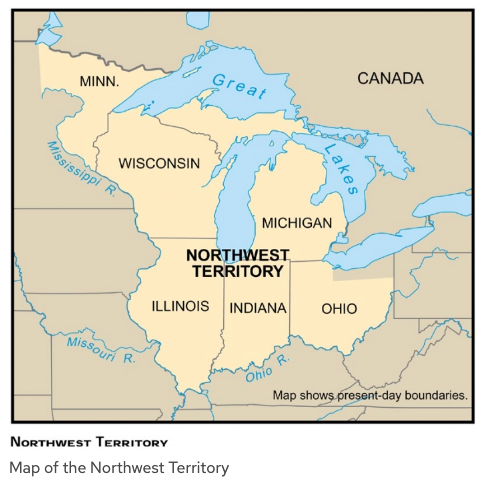
Although the Confederation Congress may have had little authority and did very little, it did one thing very well in passing the Northwest Ordinance to set up the future states with following states receiving bits of the land and setting up their governance by the principles laid out in the Northwest Ordinance.
In the critical years following the American Revolution, the Confederation Congress played a pivotal role in shaping the future of the United States. Not only did it pass the significant Northwest Ordinance, but it also saw a succession of leaders who served as Presidents of the Confederation Congress. Their leadership and the Congress’s actions during this period laid crucial foundations for the burgeoning nation.
The Confederation Congress and the Northwest Ordinance
One of the most enduring achievements of the Confederation Congress was the passage of the Northwest Ordinance in 1787. Following the principles outlined by Thomas Jefferson in the Ordinance of 1784, the authors of the Northwest Ordinance (probably Nathan Dane and Rufus King) spelled out a plan that was subsequently used as the country expanded to the Pacific.
- Territorial Governance: A division of the Northwest Territory into “not less than three nor more than five States”.A three-stage method for admitting a new state to the Union: a congressionally appointed governor, secretary, and three judges to rule in the first phase; an elected assembly and one non-voting delegate to Congress to be elected in the second phase when the population of the territory reached “five thousand free male inhabitants of full age”; and a state constitution to be drafted and membership to the Union to be requested in the third phase when the population reached 60,000
- Civil Liberties: The ordinance laid down principles of civil liberties and legal rights, setting a precedent for future states.A bill of rights protecting religious freedom, the right to a writ of habeas corpus, the benefit of trial by jury, and other individual rights; in addition the ordinance encouraged education and forbade slavery.
- Education and Slavery: It made provisions for public education and notably prohibited slavery in the Northwest Territory, a significant stance given the period’s context.
- Native American Relations: While it espoused fair treatment of Native Americans, the practical application often fell short, leading to many conflicts.From https://www.archives.gov/milestone-documents/northwest-ordinance. See this link for the actual text.
It was a tightly worded document with lasting consequences (and only if Congress could write legislation this well today, but then again they did not have the likes of Jefferson’s documents to help them out).
Impact and Legacy
The Confederation Congress, through the Northwest Ordinance and its other actions, addressed immediate post-war challenges and began shaping policies for the nation’s future. The presidents of the Congress, each with their unique contributions, steered the country through a transformative era. The passage of the Northwest Ordinance, in particular, showcased the Congress’s ability to enact visionary legislation with lasting impact.
Conclusion
The era of the Confederation Congress was a time of both uncertainty and great possibility. The passage of the Northwest Ordinance and the leadership provided by the Congress’s presidents played crucial roles in the early development of the United States. Their contributions helped navigate the young nation from the aftermath of the Revolutionary War to the brink of a new constitutional era, setting the stage for the dynamic future that lay ahead.
Sourced: https://csac.history.wisc.edu/2020/12/11/the-northwest-ordinance-13-july-1787/; https://www.archives.gov/milestone-documents/northwest-ordinance.
Generated with AI assistance